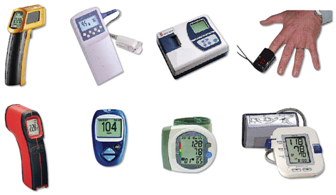What's the Secret to Better Batteries for Medical Wearable Devices?
Improvements to medical batteries commonly follow technology advancements that come from the broader battery market, and what is a focus of R&D now is on this particular area.
January 15, 2016
The growth in the wearable device market and the integration of medical devices into the Internet of Things will increase the demands placed on portable power sources. Although secondary, or rechargeable, battery performance has roughly doubled in the past 10 years, the desire to further shrink device size and/or increase its performance or lifetime will require further improvement in batteries.
Improvements to medical batteries commonly follow technology advancements that come from the broader battery market. One of the key parameters used to determine battery performance is the specific energy density, which is the available energy in the battery divided by its mass. Increasing the specific energy of a battery can lead to smaller devices, as the battery size often determines the overall device size.

There are a few areas of research aimed at increasing the energy density beyond that of current lithium-ion batteries. The first area is the development of batteries using lithium sulfur chemistry. This is an area where work is being funded both by industrial companies and the federal government through ARPA-E.
These batteries are of interest because their theoretical energy density is significantly higher than that of lithium-ion batteries, and the cathode materials are significantly cheaper and more available. Current challenges for medical application of these batteries include the limited cycle life and the variation in voltage with state of charge.
[Learn more medical device trends and developments at Pacific Design & Manufacturing, Feb. 9-11, at the Anaheim Convention Center.]
The second area is development of secondary metal-air batteries. These batteries can have the highest specific energy density, as one of the reacting materials (oxygen) is provided by the atmosphere. This also is an area that is being extensively funded by the federal government and industrial companies. These batteries are earlier stage, as some of the fundamental mechanisms are still under investigation.
When commercialized, these batteries could find use in devices that may be stored for extended periods before use, as they can be easily stored in the fully charged state. However, challenges with recharging, cycle life, and high power discharge need to be solved first.
READ MORE WEARABLE ARTICLES ON DESIGN NEWS:
The final area is the integration of the battery into a structure or housing. This is currently focused on larger scale applications, such as vehicles, but could readily transition to smaller devices. Integration of the battery into the housing can provide many advantages, including:
Designing devices to fit function, not the shape of the battery.
Decreasing total mass by eliminating some of the packaging associated with the battery.
Increasing volume in the interior of the device for electronics and sensors, or allowing a smaller device.
There are still significant challenges to be resolved, including connecting the battery to the electronics, replacement of degraded batteries, and manufacturing.
The expanding medical device market may require further improvement to the batteries that power them. Advancements in the areas discussed here all can provide significant improvement on the current state-of-the-art. However, it will likely be a few years before some of these become part of the medical device designer’s arsenal of tools.
Steven Risser will present "The Future of Flexible, Printed and Thin Film Batteries for Wearables," part of the educational conference program at Pacific Design & Manufacturing at the Anaheim Convention Center, Feb. 9-11, a Design News event and the West Coast's most comprehensive design and manufacturing trade show of the year. Register here.
Dr. Risser is a Research Leader at Battelle with a 30-plus-year career in materials research. His expertise is developing relations between material composition and performance in devices to guide application-specific materials development. He has applied this expertise across diverse markets such as energy storage and harvesting, photovoltaics, medical devices, optics, and sensors, with the focus on speeding the insertion of new technologies into commercial products. In the area of energy storage, Dr. Risser has led Battelle’s programs in conformal batteries, high energy density supercapacitors, optical sensors for enhancing lithium-ion battery safety, and low-temperature electrolytes. He has directed numerous assessments of battery technologies for commercial clients, both for end users looking to understand current and future energy storage technologies as well as for manufacturers looking for new markets for their existing products. He co-authored a recent study on lithium-ion battery safety in electric vehicles for NHTSA. Dr. Risser’s work has earned several R&D100 awards, and resulted in 18 US patents and more than 30 journal publications.
Like reading Design News? Then have our content delivered to your inbox every day by registering with DesignNews.com and signing up for Design News Daily plus our other e-newsletters. Register here!
You May Also Like
.jpg?width=300&auto=webp&quality=80&disable=upscale)


